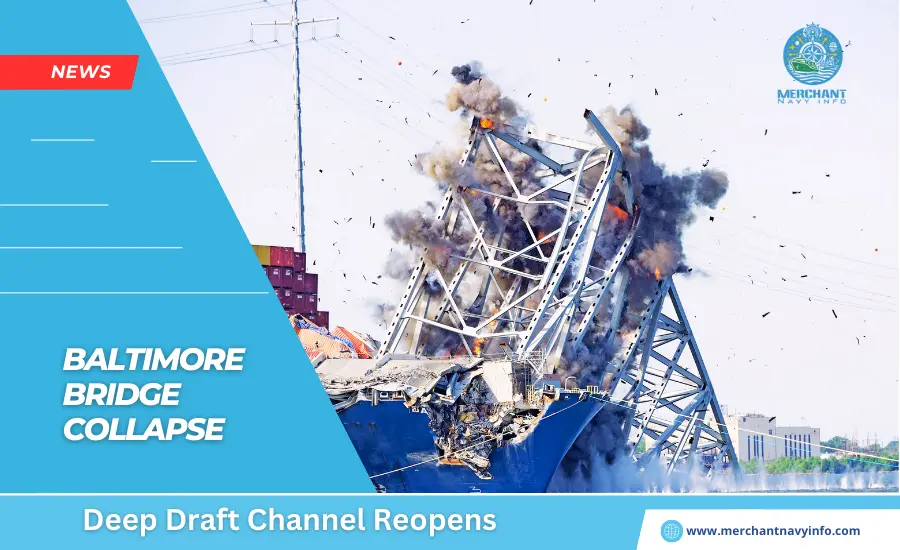
The U.S. Coast Guard Captain of the Port (COTP) has reopened the Fort McHenry Limited Access Channel in Baltimore. It is 48 feet from commercial vessel traffic.
The move comes a day after salvage crews used precision explosives to remove Baltimore bridge section resting atop the M/V Dali. However, the bridge remains grounded.
An NTSB preliminary report released on Tuesday revealed the Dali lost electrical power several times before it crashed into the Francis Scott Key Bridge in March.
The Tunnel Will be Open Daily
The reopened channel will operate daily from 8 p.m. to 6 a.m. Due to nearby BG&E powerlines, it features a controlling depth of 48 feet, a 350-foot horizontal clearance, and a 214-foot vertical clearance.
Survey analyses may allow for increased depth and width as salvage operations continue. Considering prevailing weather conditions and ongoing salvage operations, the COTP will stay in control of vessel transits.
Deep-draft vessels using the channel will require the assistance of a Maryland State Pilot and two escort tugs. The Maryland Pilots have set a 3-foot under-keel clearance (UKC) requirement for all kinds of vessels. They have limited transits to winds less than 15 knots. While there are no beam restrictions for RO-ROs, Con-ROs, and cruise ships. All other transits will be restricted to vessels with a beam of 106 feet or less, such as container ships, freight ships, tankers, and bulk carriers.
Given the ongoing salvage operations, all transits must not exceed 5 knots while the M/V DALI is in place. They should be less than 10 knots after refloating.
In addition, the Fort Carroll Temporary Access Channel and the Sollers Point and Hawkins Point Temporary Alternate Channels remain open for commercial vessel traffic. Along with various controlling depths, horizontal clearances, and vertical clearances.










